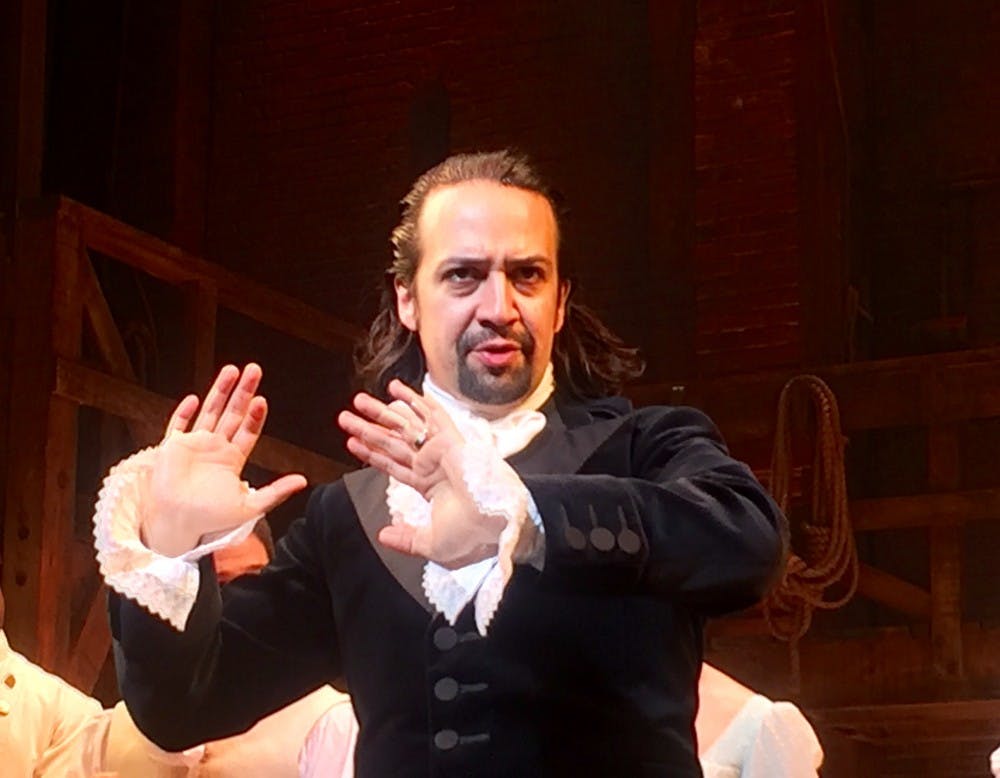I was very late to the Hamilton party. I’m not going to lie to you, as a Brit, I wasn’t that interested in a musical about America, America’s Founding Fathers and animosity for Britain. That doesn’t by any means suggest that I wasn’t beyond excited to see the show in London just a week after it opened.
Before hearing about Hamilton, I had never listened to any of the music, and (I apologize for my lack of American knowledge) had never even heard of Alexander Hamilton. In fact, I knew relatively little about the Founding Fathers before watching the musical and have learned very little since then — aside from what I’ve heard from obsessively listening to the soundtrack on repeat at every possible moment.
That was until I attended a talk at the Homewood Museum given by Tony Award-nominated author, producer and director Mark Bramble, entitled 42nd Street, Barnum, and Hamilton: Dance for Theatrical Storytelling. The talk was given alongside the museum’s current exhibition, Alexander Hamilton: The Man Who Made Modern America.
Despite being mainly attracted to the talk because of Hamilton, I was also intrigued by the other two musicals mentioned in the title of the talk: Barnum and 42nd Street, two musicals I knew relatively less about.
Bramble ended up speaking about a whole plethora of musicals in his talk, starting with the 1866 show The Black Crook, a melodrama that is often considered to be the first piece of musical theatre and what gave America the claim of having originated the idea. Bramble explained that the show was a collaboration between melodrama and ballet which caused outrage when it first opened in New York City.
Bramble then gave a whirlwind tour through some of the musicals in which, in his opinion, dance played a particularly crucial role. He noted at the end of the talk during a question and answer session that there were obviously many more musicals which he could have mentioned but that he had tried to pick several in which dance was particularly integral to the storytelling and which were “historically important.”
Personally, I would have liked if he had spent more time on fewer musicals. He ended up mentioning 13 different musicals in the space of a one hour talk. While there were some he spent more time discussing, it all just felt a bit rushed.
The discussion stretched from No, No, Nanette to West Side Story to Hello, Dolly! with brief mentions of Barnum and 42nd Street. I couldn’t help but feel like the talk would have been more fruitful if Bramble had just focused on how three or four of these musicals used dance in their storytelling, rather than just skimming over the many that did.
For example, Bramble mentioned that West Side Story is highly choreographed and even showed the opening of the movie version of the show to highlight the beautiful choreography of the two opposing gangs, the Jets and the Sharks. However, beyond that there was little examination of the importance of this decision in relation to the story and its effect.
Bramble finished his talk with slightly more time focused on Hamilton and its use of hip hop and modern dance, bringing us back to the exhibition and the origin of the discussion.
In discussing how musical theatre was able to reinvigorate the subject of American history for an entire nation and beyond, he pointed out how the show transcends any notions we may already have about history by eschewing race-based casting.
He joked that seeing an African-American George Washington or a Latinx Alexander Hamilton meant that everything you think you know when going in to watch the show has to be forgotten.
In the case of the ensemble, gender is also disregarded — which I think adds another layer of interest to the show. Bramble also went on to discuss Paul Tazewell’s intelligent costume designs, referencing the difference between the flashy Thomas Jefferson and the beige, neutral ensemble around him as an extreme example.
However, Bramble did not spend that much time examining the actual dance involved in the music, apart from it being modern. He did mention how the musical had brought the story into a more modern setting with its hip hop dancing and rap music.
That being said, I will always enjoy hearing people talk about musical theatre, no matter what the specifics are. Even if Bramble didn’t discuss what I expected him to, it was still interesting to hear from a Tony-award nominated director and producer.
I highly recommend that anyone vaguely interested in Hamilton go to Homewood Museum and learn a bit more about Hamilton, Washington, Burr and everyone else in the musical, and then go and listen to the soundtrack again for the 100th time — at least that’s what I did.
Alexander Hamilton: The Man Who Made Modern America will be on display until March 11, 2018 at the Homewood Museum.





